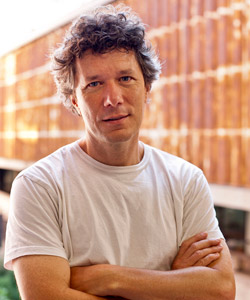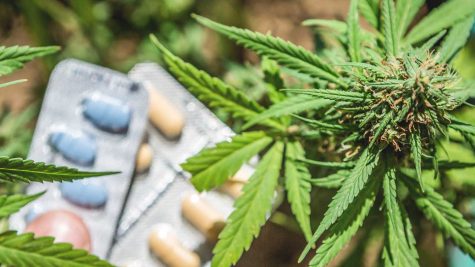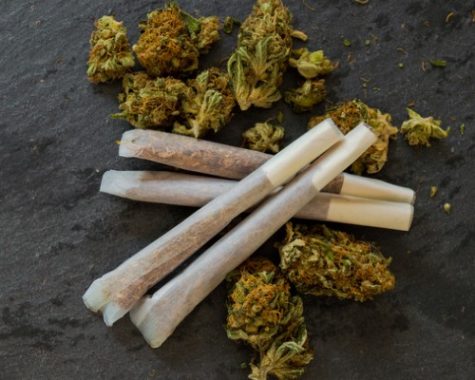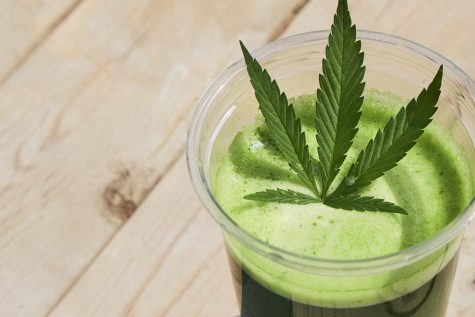Five of the most significant medical cannabis research studies ever conducted
Thousands of years ago, cannabis was used by humankind for the very first time. Scientists recently discovered that the plant’s psychoactive properties were formerly enjoyed by our ancient Chinese ancestors in the Tibetan Plateau.
Prior to prohibition being effectuated in the 1930s amidst the “Reefer Madness” propaganda that was circulating at the time, pharmacists once stocked the therapeutic leafy green plant inside their medicine cabinets. Now that much of the United States has passed some kind of cannabis legalization law, it’s clear that public and political perceptions on cannabis are metamorphosing at a rapid rate. So much so, in fact, that analysts at Grandview Research believe the global cannabis market could be worth $66.3 billion by 2025.
Something that has majorly contributed to sweeping legislation includes the scientific discoveries that keep flooding out of educational and research institutions worldwide. Let’s take a look at five medical cannabis studies that have profoundly influenced the plant’s legal status on a global scale:
1. Cannabis shrinks tumors (1974)
 The year 1974 was an exciting time for cannabis when the world’s first-ever study demonstrating the non-psychoactive cannabinoid’s antitumor benefits was published.
The year 1974 was an exciting time for cannabis when the world’s first-ever study demonstrating the non-psychoactive cannabinoid’s antitumor benefits was published.
Interestingly, the American Cancer Society and NIDA funded this study, which was initially conducted to expose cannabis’ harmful effects on the immune system. However, researchers from the Medical College of Virginia were amazed to discover that cannabis compounds can actually inhibit tumor growth.
Mice were implanted with tumors and treated using cannabis’ primary psychoactive compound delta-9-THC (tetrahydrocannabinol) for 10 consecutive days following tumor implantation. Instead of showing the world that THC amplifies the rate at which cancer grows, the results of this study demonstrated quite the opposite.
”Mice treated for 20 consecutive days with THC and CBN had reduced primary tumor size,” concluded the researchers, who published their findings in The Journal of the National Cancer Institute.
2. Cannabis treats nausea caused by chemotherapy (1975)

Perhaps one of the most distressing side effects of chemotherapy – aside from the patient losing his or her hair and feeling fatigued – is nausea that comes with this type of cancer treatment.
Dr. Lester Grinspoon was an Associate Professor from the Harvard Medical School. His research kickstarted in the 1960s, but his motives were quite different at the beginning to what they were after years of studying the plant. Initially, Dr. Grinspoon caught onto the negative propaganda that circulated following the release of a 1930s movie called “Reefer Madness” and in an attempt to stop his astronomer friend Carl Sagan from smoking the green stuff, he investigated its effects and published a book in 1971 titled Marihuana Reconsidered.
He struggled to pinpoint the plant’s bad points and once his son was diagnosed with leukemia at the tender age of 15, he began to understand the true potential of using cannabis to relieve chemotherapy side effects, with nausea being one of the most-loathed side effects of them all.
From watching his son vomiting every day and skipping meals to craving Subway sandwiches after he started using cannabis, Dr. Grinspoon soon became convinced that the plant had anti-nausea effects; something that prompted him to conduct a 1975 study that successfully proved the plant’s suitability as an aid for easing chemotherapy-associated nausea and vomiting. His study was published in the New England Journal of Medicine.
3. Antitumoral action of cannabinoids (2000)

Another significant study that suggests cannabis possesses therapeutic potential was this 2000 study on the effects of using cannabinoids to treat cancer.
Cannabinoids are the naturally-occurring chemical compounds found in the cannabis and hemp plants, although hemp only grows with small quantities of the psychoactive cannabinoid THC.
It took almost 30 years for a follow-up study to take place following the aforementioned 1974 cannabis study on using cannabis to shrink tumors. The University of Madrid’s designated professor of biochemistry, Dr. Manuel Guzman, took it upon himself to conduct a study that would either confirm or dispel previous findings.
The outcome? Guzman’s report, which was published in the journal Nature Medicine, revealed that not only do cannabinoids have the potential to shrink tumors and inhibit their growth but also, cannabinoids can be used to treat tumors without affecting the tissues surrounding them.
4. Cannabis helps AIDS patients without serious side effects (1997)
 Ever wondered where the name “Mary Jane” came from? Well, a nurse’s assistant who went by the name of Mary Jane Rathbun, A.K.A. “Brownie Mary,” decided to experiment with using cannabis for the treatment of AIDS.
Ever wondered where the name “Mary Jane” came from? Well, a nurse’s assistant who went by the name of Mary Jane Rathbun, A.K.A. “Brownie Mary,” decided to experiment with using cannabis for the treatment of AIDS.
Mary’s “magically delicious” brownies became a hit on the hospital ward where she was volunteering and soon, the head of oncology at San Francisco General Hospital caught wind of what was happening.
While Mary could have gotten herself into trouble distributing weed-laced treats to hospital patients without authorization to do so, Dr. Donald Abrams saw the bright side of Mary’s work. “Brownie Mary” inspired him to conduct clinical trials into the long-term effects of using cannabis to treat the symptoms of HIV and AIDS-related nausea.
Dr. Abrams successfully secured funding to carry out the study, which he concluded: “did not hurt the immune system, did not increase viral load, did not negatively interact with protease inhibitors and actually did facilitate increased caloric intake as well as weight gain.”
5. Cannabis’ role in opioid use disorder (2018)
 Could opioids be replaced with cannabis? Based on government data that says the plant’s legalization is deterring patients from getting prescribed opioids, the answer to that question is, quite possibly.
Could opioids be replaced with cannabis? Based on government data that says the plant’s legalization is deterring patients from getting prescribed opioids, the answer to that question is, quite possibly.
Based on an in-depth review from the National Academies of Science and Medicine, adults who were currently using opioids to relieve chronic pain managed to decrease opioid use by 40 to 60 percent after using cannabis as a treatment.
What’s more, the vast majority said that they would rather use cannabis than opioids since they produce fewer unwanted side effects. Enhanced quality of life was noticeable among patients who were administered with cannabis, most of whom required lower doses of cannabis for satisfactory pain relief as opposed to opioids; more Americans died from overdosing on opiate-based medications in 2016 than the number of Americans who died during the entire Vietnam War.
Analgesia is the main reason why doctors prescribe either opioids or medical cannabis to patients. The primary use for both prescription opioids and cannabis is analgesia. In fact, up to 90 percent of patients residing in areas whereby state-level cannabis programs have been introduced will use the plant and its derivatives to treat chronic pain.
The cannabis studies mentioned in this post have had a significant effect on the plant’s ongoing acceptance and integration into the pharmaceutical industry. If analysts are correct in predicting federal cannabis legalization could happen in the U.S. by 2020, more clinical trials on the uses and properties of cannabis in modern medicine will begin to surface in the very near future.








